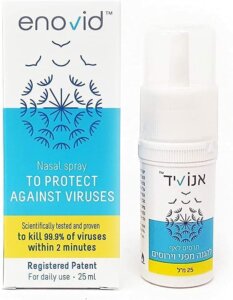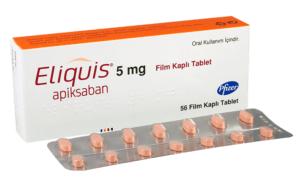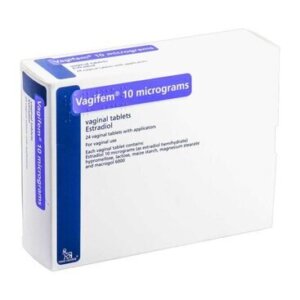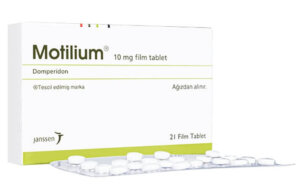
Chronic nail biting (onychophagia) is generally regarded as one of the behaviors grouped as Body-focused Repetitive Behaviors (BFRBs). This is a category of self-grooming repetitive behaviors that includes nail biting, hair pulling (trichotillomania), and skin picking (excoriation) that can cause damage to the body if left untreated.
BFRBs are known to be associated with other behavioral and psychiatric conditions, including mood disorders like depression and anxiety disorders, Attention-deficit/Hyperactivity Disorder (ADHD), and obsessive-compulsive disorder (OCD). Nail biting is classified under Obsessive-Compulsive and Related Disorders in the Diagnostic and Statistical Manual of Mental Disorders, Fifth Edition (DSM-5) and is not specifically indexed as a standalone disorder. Onychophagia can develop even when none of the other symptoms associated with OCD, ADHD, or mood disorders are evident.
What causes chronic nail biting?
The main causes seem to fall into a few main categories:
- Stress and Anxiety
Aspects of stress and anxiety that act as common psychological triggers for nail biting. During stressful situations, people may bite their nails to cope or distract themselves. When they feel anxious, repetitive behavior can be a way to relieve emotional discomfort. - Boredom
When a person’s mind is under-stimulated, it can lead to them unconsciously find ways to create stimuli. - Perfectionism
Perfectionists are often unsatisfied with their achievements and are prone to excessive self-criticism. They may turn to nail biting as a way to cope with feelings of frustration or dissatisfaction. - Habit
Persistent childhood behavior often becomes habitual. This is one of the most common and hardest-to-treat causes if it is not caught early in a person’s maturation. In the main these are coming from imitation and social learning from observing family members or close associates during childhood, which can play a significant role in the development of such habits. In some cases, the physical sensation of biting nails provides sensory feedback that can be soothing or gratifying, similar to thumb-sucking. This sensory aspect can make the habit particularly hard to break. - Physical abnormalities
Physical and physiological factors like nail structure abnormalities or skin conditions around the nails can instigate nail biting. Some individuals might start biting their nails in response to a hangnail or other irregularity, which then evolves into a habit.
What effect can behavioral disorders have in promoting nail biting?
Obsessive-compulsive disorder shares similarities in repetitive behavior and the urge to perform specific acts, as in chronic nail biting. Bipolar disorder also shares some of the triggers for repetitive behavior. In this context, nail biting could be more related to the underlying stress, anxiety, or other emotional disturbances common in these conditions.
The causes of nail biting are rarely isolated to one specific factor. Often, it’s the interplay of learned behavior, psychological, and physiological elements. For example, a child may develop the habit, and it may become exacerbated under stress or anxiety in adulthood.
What are the possible results of untreated onychophagia?
A wide spectrum of physical and psychological consequences can come from not treating body-focused repetitive behaviors. For example, people with a compulsive habit of hair pulling can start pulling their eyebrows a little and end up without eyebrows, or if they cannot stop pulling their hair, they may be left with large bald patches. People unable to stop picking at their skin can end up badly scarred, to the point where going out in public poses social challenges as well as the risk of infection.
In the case of nail biters, there is a wide range of outcomes, even going as far as to allow sub-cutaneous infections in the hands and damage to teeth, apart from damage to the nails themselves. The habit can lead to short, uneven, and brittle nails with jagged edges. Tears in the skin around the nails can introduce bacteria and germs into the nail bed, leading to nail infections, such as paronychia, which can be painful and may require medical treatment.
Chronic nail biting can also affect the teeth because it may cause chipped or cracked teeth and contribute to jaw problems if done frequently. In severe cases of nail-biting, the growth of nails can be inhibited, leading to shorter and weaker nails over time, and prolonged and aggressive nail biting can cause the nails to become misshapen and, in severe cases, may even result in the complete disappearance of nails on some fingers.
What treatments are recommended to stop chronic nail biting?
As for most learned behaviors, the main treatments are namely:
- Behavioral therapies, such as Cognitive-behavioral therapy (CBT), can be effective in addressing the underlying psychological triggers and in developing healthier coping mechanisms.
- Stress management, mindfulness, and meditation can help in managing stress and anxiety, thereby reducing the urge to bite nails.
- Finding replacement or substitute habits, like squeezing a stress ball, clenching fists, or sitting on one’s hands, can redirect the physical urge to bite.
In cases where nail biting is severe or linked to mental health issues like anxiety or OCD, seeking help from a mental health professional is advised.
Are there physical treatments for chronic nail biting?
There are two main possible courses for direct treatment through physical intervention:
- Barriers such as bitter-tasting nail polishes or wearing gloves can be physical deterrents. They have limited applicability in many cases because they can be easily discarded.
- Interfering with the neurological process that creates the feedback mechanism that may act as the primary trigger for forming the habit. Most of the behavioral disorders that lead to nail biting and other BFRBs come from disturbances in the person’s neurotransmitter systems and levels of oxidative stress. Some research has found that balancing the levels of neurochemicals, particularly glutamate and gamma-aminobutyric acid (GABA), can benefit behavior. Glutamate stimulates the brain, while GABA calms it down, and both can be out of balance in people with conditions like OCD and other behavioral disorders, including BFRBs.
The conventional medications that seek to address the need to rebalance glutamate and GABA levels require a doctor’s prescription; for example, antidepressants that modulate serotonin neurotransmission, such as selective serotonin reuptake inhibitors (SSRIs) and serotonin-norepinephrine reuptake inhibitors (SNRIs). Many doctors are reluctant to use such powerful drugs for milder conditions such as nail biting and other BFRBs.
There is increasing evidence that there’s a much simpler way of boosting glutamate levels (and not interfering with other important neurotransmission functions) by using N-acetylcysteine (NAC), which is a precursor to the formation of glutamate. NAC is an amino acid that cannot itself cross the blood-brain barrier and directly change the chemistry in the brain, but by boosting levels of glutamate, it can act to create the same effect as the prescribed meds.
In lower doses, which are available from us without prescription as Reolin effervescent powder and Rheunac effervescent tablets, N-acetylcysteine can help to restore the neurotransmitter balance safely and quickly, which can lead to the cessation of habitual behavior such as nail biting within a matter of days. It also can be used to reduce the symptoms of depression, obsessive behavior, and cravings. NAC is an amino acid that helps boost the immune system to fight infections and viruses and can be used to treat many illnesses, including asthma, allergies, and colds. Larger doses are used in more serious conditions like cystic fibrosis, bronchitis, tuberculosis, and pneumonia.
Why you should source NAC from IsraelPharm
In America, the use of NAC has been clouded by a prolonged dispute between food supplement manufacturers and the FDA, which we explained in a previous blog titled “Marketing of NAC (N-acetylcysteine) and the bureaucratic time warp.” However, thanks to the simpler situation here in Israel, there is no complication in having NAC marketed as a medicine and not as a food additive. Reolin and Rheunac are manufactured and packaged by reputable pharmaceutical companies and, In Israel, can only be sold in licensed pharmacies.
















